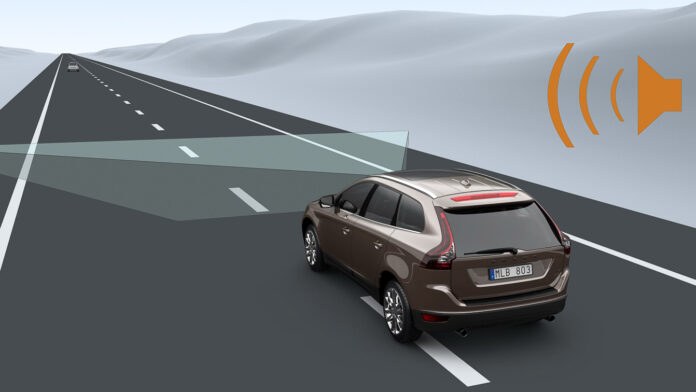BlueWeave Consulting, a leading strategic consulting and market research firm, in its recent study, estimated that the Asia-Pacific Lane Warning Systems Market size at USD 1,790.42 million in 2022. During the forecast period between 2023 and 2029, BlueWeave expects the Asia-Pacific Lane Warning Systems Market size to grow at a CAGR of 15.2% reaching USD 4,820.83 million by 2029. The demand for LWS is increasing due to the increasing adoption of advanced driver assistance systems (ADAS) in the region. ADAS technologies, including LDWS, are becoming increasingly common in newer vehicle models, with many automakers offering them as standard features or as optional extras. This is driven by both consumer demand for safer vehicles and government regulations mandating the installation of ADAS features in new vehicles. The growth of the automotive industry in the Asia-Pacific region is also contributing to the increasing demand for LWS. With increasing numbers of vehicles on the road, there is a greater need for technologies that can improve safety and prevent accidents.
Opportunity: Growing Demand for Electric Vehicles
The growing demand for electric vehicles (EVs) in the Asia-Pacific region is creating new opportunities for the lane warning systems (LWS) market. EVs are becoming increasingly popular in the region due to government incentives, rising fuel costs, and a growing awareness of environmental issues. This has led to a surge in EV sales and a growing demand for EV-related technologies, including advanced driver assistance systems (ADAS) such as LWS. The main benefit of LWS in EVs is that it can help to extend the range of the vehicle. EVs typically have a limited driving range, and any measures that can help to improve efficiency and reduce the risk of accidents can help to increase the range and improve the overall performance of the vehicle. LWS can help to reduce the risk of accidents caused by driver distraction or fatigue, which can help to improve safety and increase the range of the vehicle.
Sample Request @https://www.blueweaveconsulting.com/report/asia-pacific-lane-warning-systems-market/report-sample
Challenge: Competition from Other Safety Features
The competition from other advanced safety features can have a dampening effect on the growth of the lane warning systems (LWS) market. As automakers continue to develop and integrate new safety features into their vehicles, consumers may prioritize these features over LWS, which could impact the demand for LWS. Moreover, the cost of LWS systems can also be a factor that affects the market. If consumers perceive that other safety features provide better value for the price, they may choose to invest in those instead of LWS. Additionally, if the cost of LWS systems remains high compared to other safety features, this could also affect the adoption of LWS.
Impact of COVID-19 on the Asia-Pacific Lane Warning Systems Market
The COVID-19 pandemic disrupted supply chains and created manufacturing delays, slowing the market’s growth. On the other hand, the pandemic raised demand for LDWS since, owing to health concerns, more individuals choose to commute by automobile rather than public transit. Due to supply chain disruptions and decreased demand for new automobiles in the early stages of the pandemic, many automakers in the Asia-Pacific area were forced to temporarily close their plants or restrict output. As these systems are often installed during the construction of new cars, this slowed the expansion of the LDWS industry.
Segment Information
Asia-Pacific Lane Warning Systems Market – By Vehicle Type
Based on vehicle type, the market is split into passenger cars and commercial vehicles segments. The Asia Pacific region is the largest market for passenger cars globally, and with the increasing demand for automobiles in the region, there is a growing need for safety features like LWS. Passenger cars are the primary beneficiaries of LWS, as these vehicles are most commonly used for personal transportation, making them more prone to driver distraction and fatigue. LWS can help prevent accidents caused by lane departure, which is a common cause of accidents in the region. The adoption of LWS in passenger cars is expected to increase as automakers prioritize the integration of advanced safety features into their vehicles. In contrast, the government mandated that all new big passenger vehicles and trucks be equipped with Automatic Emergency Braking (AEB) and Lane Departure Warning (LDW) systems beginning in January 2019. These factors are projected to contribute to the market’s growth throughout the estimated period.
Asia-Pacific Lane Warning Systems Market – By Sales Channel
Based on sales channel, the market is classified into OEM and aftermarket segments. OEMs in the Asia Pacific region are increasingly prioritizing the integration of advanced safety features like LWS into their vehicles, driven by consumer demand and government regulations. As such, the OEM sales channel segment is expected to continue to grow in the region, driven by the increasing demand for LWS and other ADAS features. For instance, automobile manufacturers are partnering with technology firms to develop ADAS systems such as Lane Warning Systems. Nvidia offers artificial intelligence services for autonomous cars as well as augmented reality, software, and hardware support through DRIVE AP2X, Nvidia DRIVE, and Nvidia DRIVE AGX.
Asia-Pacific Lane Warning Systems Market – By Country
The Asia-Pacific Lane Warning Systems Market is dominated by South Korea. South Korea’s car sector is one of its most vital, contributing for more than 10% of the country’s GDP each year. The government enforced strict safety requirements in response to a rise in traffic accidents, which is fueling the expansion of the LDWS industry. According to a 2019 Korea Times article, the government and automakers would invest around USD 50.7 billion in the industry by 2025. By 2024, the South Korean government plans to complete the communications, road, and traffic infrastructure necessary for completely autonomous driving.
Competitive Landscape
The Asia-Pacific Lane Warning Systems Market is highly competitive, with all the players continually competing to gain a larger market share. The key players are Continental AG, Delphi Automotive, Denso Corporation, WABCO Vehicle Control Services, Fujitsu Laboratories Ltd, Magna International, ZF TRW, Robert Bosch Gmbh, Mobileye, and SAIC-GM.
Contact Us:
BlueWeave Consulting & Research Pvt. Ltd
+1 866 658 6826 | +1 425 320 4776 | +44 1865 60 0662














